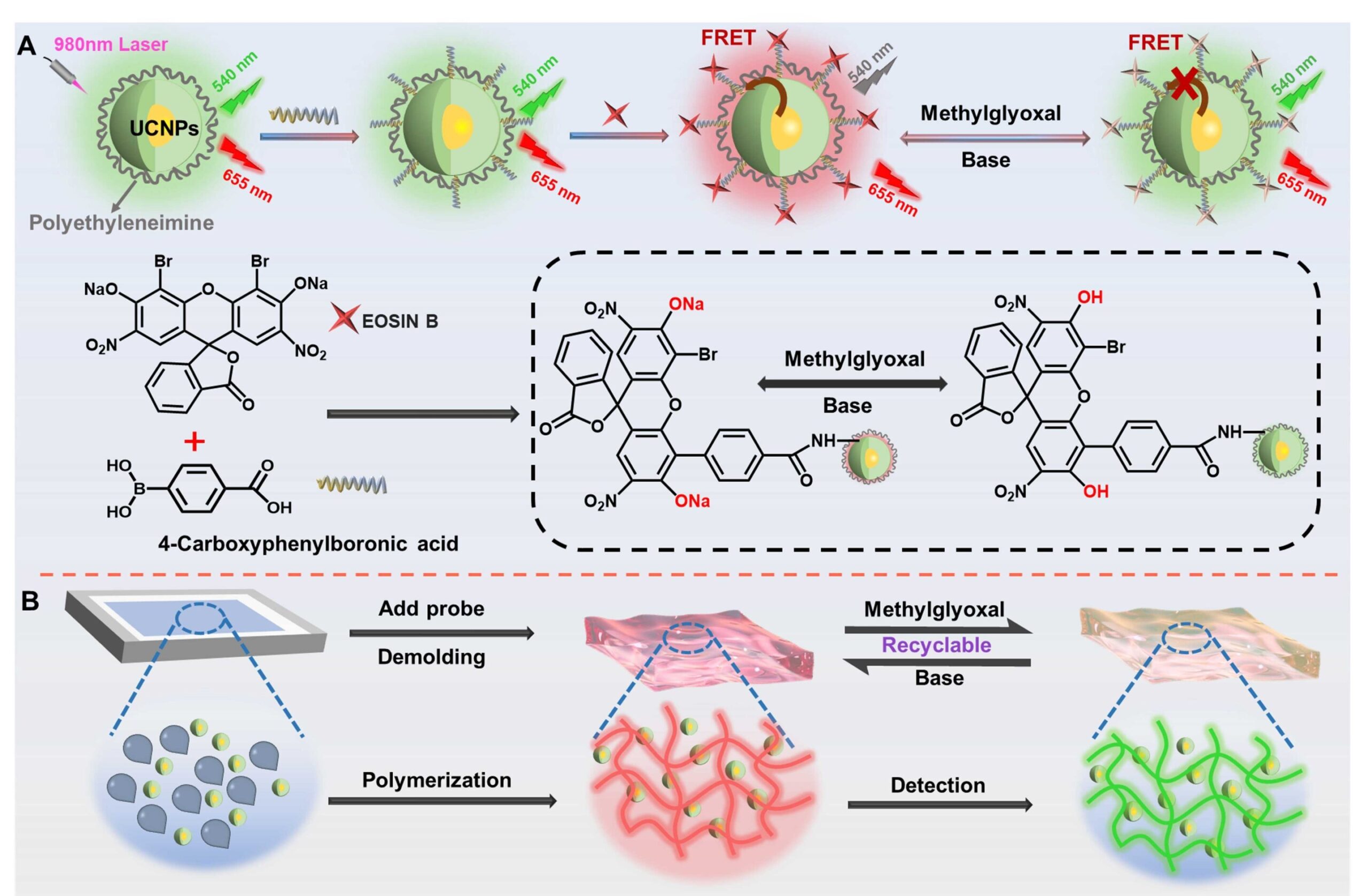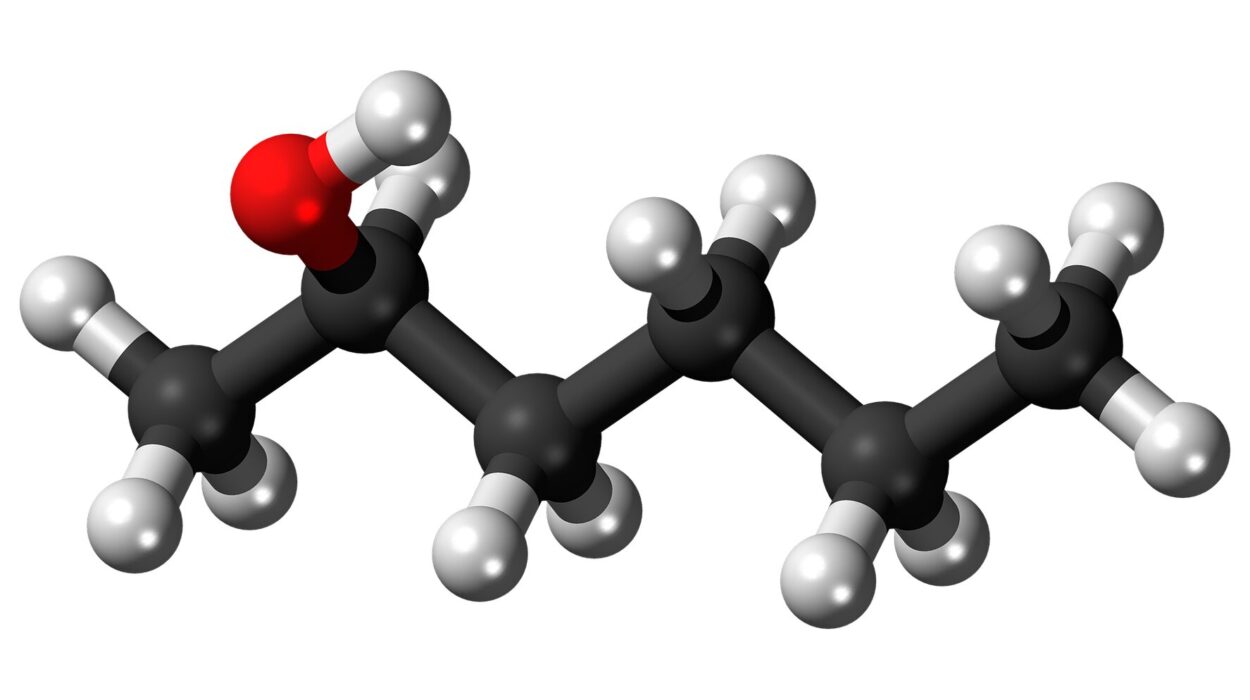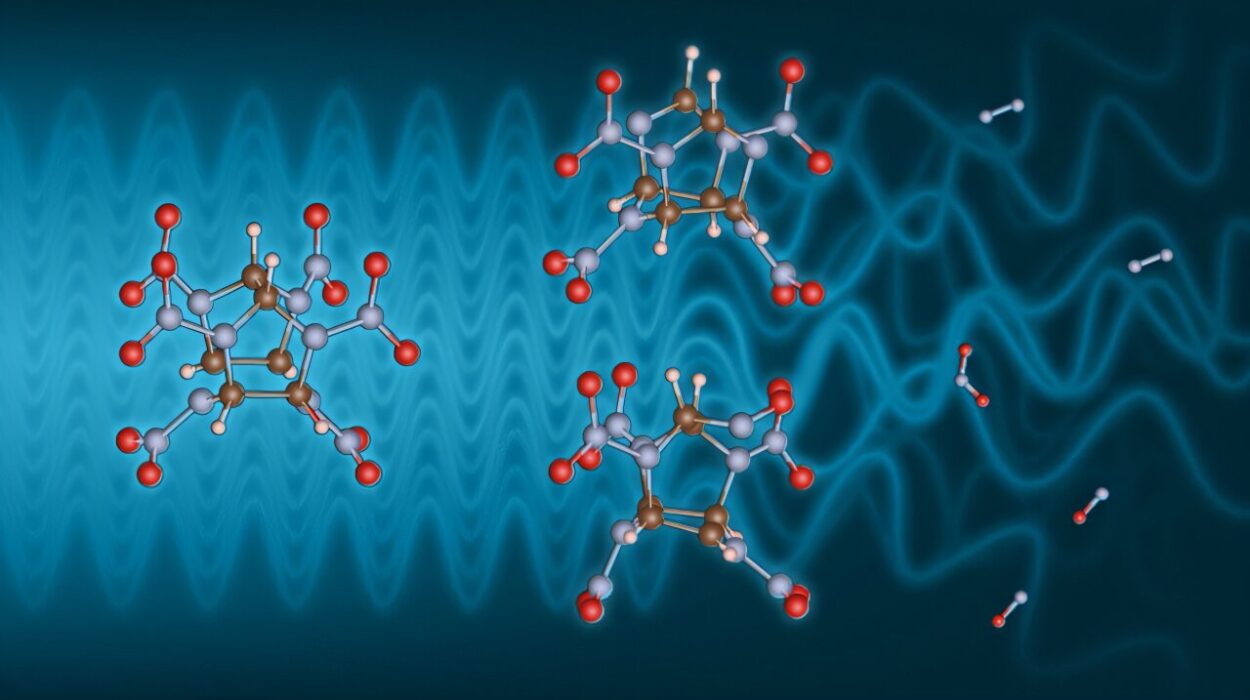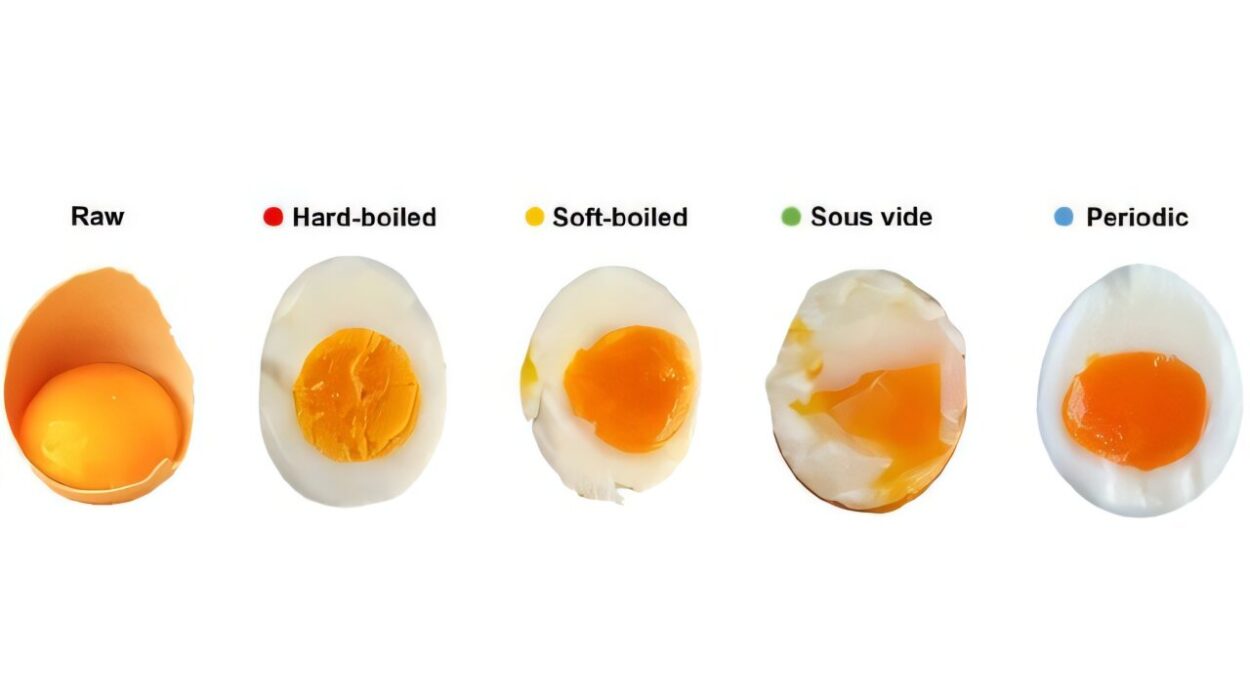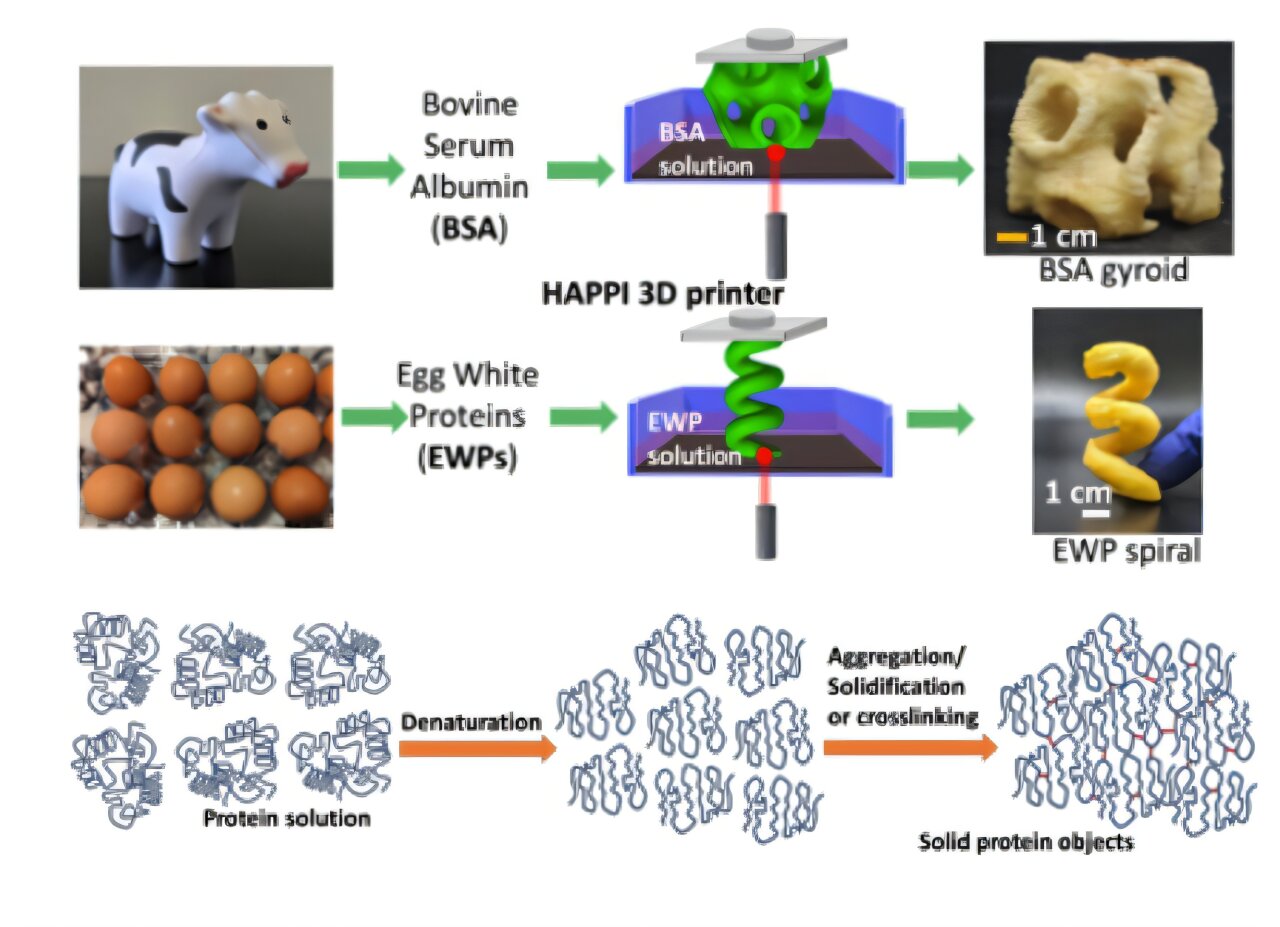In a significant advancement in both food quality control and medical diagnostics, a research team led by Professor Jiang Changlong from the Hefei Institutes of Physical Science, part of the Chinese Academy of Sciences, has developed an innovative, real-time multi-scenario fluorescence detection technology for methylglyoxal (MG). Their cutting-edge work, published in Analytical Chemistry, brings together modern sensor technology and mobile phone capabilities, enabling rapid and on-site monitoring of methylglyoxal levels in various applications, such as wine production and diabetes management.
Methylglyoxal, a small dicarbonyl compound, has dual relevance—both in wine fermentation and human metabolism. In wine, methylglyoxal is a byproduct of fermentation processes. When present in excess, it can lead to undesirable flavors, such as astringency and bitterness, significantly affecting the sensory qualities of the final product. In the human body, elevated levels of methylglyoxal are associated with metabolic issues, including an increased risk of developing diabetes and its complications. As such, the ability to monitor methylglyoxal levels in real-time is crucial in both fields, making the development of accurate and efficient detection methods a top priority.

The Technology Behind the Detection
The breakthrough technology developed by the research team hinges on the combination of upconversion nanoparticles (UCNPs) and three-dimensional porous hydrogels. These hydrogels are known for their biocompatibility, stretchability, and versatile applications in medical diagnostics. However, a common challenge in using fluorescent hydrogels in biological settings is the interference caused by background autofluorescence, which can obscure accurate readings. The team addressed this issue by integrating UCNPs into the hydrogels, which effectively eliminate background fluorescence and significantly enhance the detection sensitivity.
Upconversion nanoparticles are a key innovation in fluorescence-based detection technologies. These nanoparticles absorb low-energy infrared light and convert it into higher-energy visible light, which is ideal for sensitive detection applications. By using UCNPs, the researchers could bypass the issue of autofluorescence that often plagues conventional fluorescent sensors, leading to more reliable and precise measurements.
How the Sensor Works
The sensor developed by the team operates using a fluorescence resonance energy transfer (FRET) mechanism. Specifically, the sensor is composed of a probe made from UCNPs combined with modified eosin B (mEB), a fluorophore. When methylglyoxal comes into contact with the sensor, it interacts with mEB, causing a shift in the fluorescence emission from red to green. This shift provides a clear and measurable signal that can be easily detected.
The sensor itself is embedded in a three-dimensional hydrogel, which serves as a support structure. To further enhance the sensor’s utility, the research team utilized 3D printing technology to create a portable, flexible, and reversible fluorescence sensor. This design allows for easy integration into a range of applications, from on-site wine quality testing to health monitoring devices for individuals with diabetes.
Results and Sensitivity
The team’s results demonstrated that the upconversion fluorescent probe embedded in the hydrogel sensor achieved an impressive detection limit (LOD) of 59 nM, while the hydrogel sensor itself had an LOD of 75.4 nM. These results indicate that the sensor is highly sensitive and capable of detecting even trace amounts of methylglyoxal, making it suitable for both low-concentration applications in food production and more critical health-related measurements.
The significance of these detection limits cannot be overstated. In wine production, methylglyoxal levels must be closely monitored to ensure that the final product maintains the desired taste profile. Excessive methylglyoxal can negatively affect wine flavor, making the sensor an essential tool for winemakers. Similarly, in diabetes management, the ability to monitor methylglyoxal levels offers a potential new avenue for assessing metabolic dysfunctions in real-time, potentially aiding in the management and treatment of diabetes.
Real-World Applications
The implications of this technology are wide-reaching. For wine producers, the ability to monitor methylglyoxal levels in real-time could help standardize flavor profiles and ensure the consistency of wine quality. This real-time monitoring would allow for faster adjustments during the fermentation process, preventing undesirable flavors from forming and optimizing the overall product.
For individuals living with diabetes, monitoring methylglyoxal levels could provide valuable insights into their metabolic health. As elevated methylglyoxal levels are associated with an increased risk of diabetes and its complications, this sensor could serve as an early-warning system, enabling individuals to take proactive steps in managing their condition.
The sensor’s integration with smartphone color recognition capabilities is another game-changer. By pairing the sensor with a smartphone, the team has created a portable, user-friendly device that can be used by both professionals and consumers alike. “That means that in the future your phone can help save the flavor of your wine and keep an eye on your health,” said Kang Xiaohui, a team member. This integration not only enhances the sensor’s accessibility but also reduces the need for specialized equipment, making it a practical solution for widespread use.
Future Outlook
This research marks a significant leap forward in the development of real-time sensing technologies. The team’s innovative use of upconversion nanoparticles and 3D-printed hydrogels sets a new benchmark for fluorescence-based detection, opening up a range of possibilities for real-time monitoring in both food and healthcare sectors.
Looking ahead, the team plans to refine and expand the sensor’s capabilities. Future research will likely focus on improving the sensor’s sensitivity and selectivity for other compounds, as well as exploring its potential in different biological and environmental applications. Additionally, the integration of wireless communication technologies could further enhance the sensor’s versatility, allowing for remote monitoring and data analysis in real time.
This innovative approach to fluorescence detection represents the convergence of cutting-edge materials science, mobile technology, and practical applications in health and food industries. The potential for this technology to impact both everyday consumers and professionals in various fields is immense, and it holds the promise of making real-time monitoring more accessible and effective than ever before.
Reference: Xiaohui Kang et al, Visual Detection of Methylglyoxal in Multiple Scenarios via NIR-Excitable Reversible Ratiometric Fluorescent Hydrogel Sensor, Analytical Chemistry (2024). DOI: 10.1021/acs.analchem.4c05178
